
American Carly Zimmerman explores Ireland’s Wild Atlantic Way in a once-in-a-lifetime trip to the Emerald Isle.
Visiting Ireland is on the bucket list of so many of my fellow Americans. When we think of Ireland, we think of the rolling green landscapes, medieval castles, foamy pints of Guinness in quaint old pubs and yes, sorry, that charming little leprechaun on our childhood boxes of Lucky Charms.
Increasingly, we are also hearing about the Wild Atlantic Way, the world’s longest defined coastal touring route that stretches from the country’s most northerly point, Malin Head in County Donegal, to its most southerly point, Mizen Head in County Cork.
The route, we are told, weaves and winds across 2,500km of beautiful coastline, taking in six distinct regions - Northern Headlands (County Donegal), the Surf Coast (Counties Donegal and Sligo), the Bay Coast (Counties Galway and Mayo), the Cliff Coast (Counties Galway, Clare and Kerry), Southern Peninsulas (Counties Kerry and Cork) and the Haven Coast (County Cork), which visitors can explore in individual sections.
So when I had the chance to spend the summer in Galway, I wanted to see if our collective longing for the Emerald Isle held up to the reality and if the Wild Atlantic Way held up to its promise. I’ll warn you now: if you were planning to save money by skipping the vacation this year, I take no responsibility for the Aer Lingus impulse buys that may result here!

Galway City - The Perfect Base for a Wild Atlantic Way Adventure
Galway City, with its ideal balance of modern and medieval, comfortable convenience and cultural curiosity, turned out to be a fabulous place to begin my sojourn along the Wild Atlantic Way. With buses every hour from Dublin Airport, it was a short two and a half hours before I was wandering down Shop Street, mixing into the bustling throng of both tourists and Galwegians. After stopping in at one of what must be dozens of coffee spots in the city, I relaxed with a pint outside the iconic Tigh Neachtain’s pub, letting the ever-present (and quite impressive) buskers serenade me with their beautiful Irish folk songs.
Almost exactly in the middle of the Wild Atlantic Way route, one can either go north from Galway and see the awe-inspiring seascapes of Clifden and Rossbeg or south and experience quintessential Irish towns like Doolin and Portmagee. So after settling into Galway, I decided to spend each of my weekends setting out along the coast.
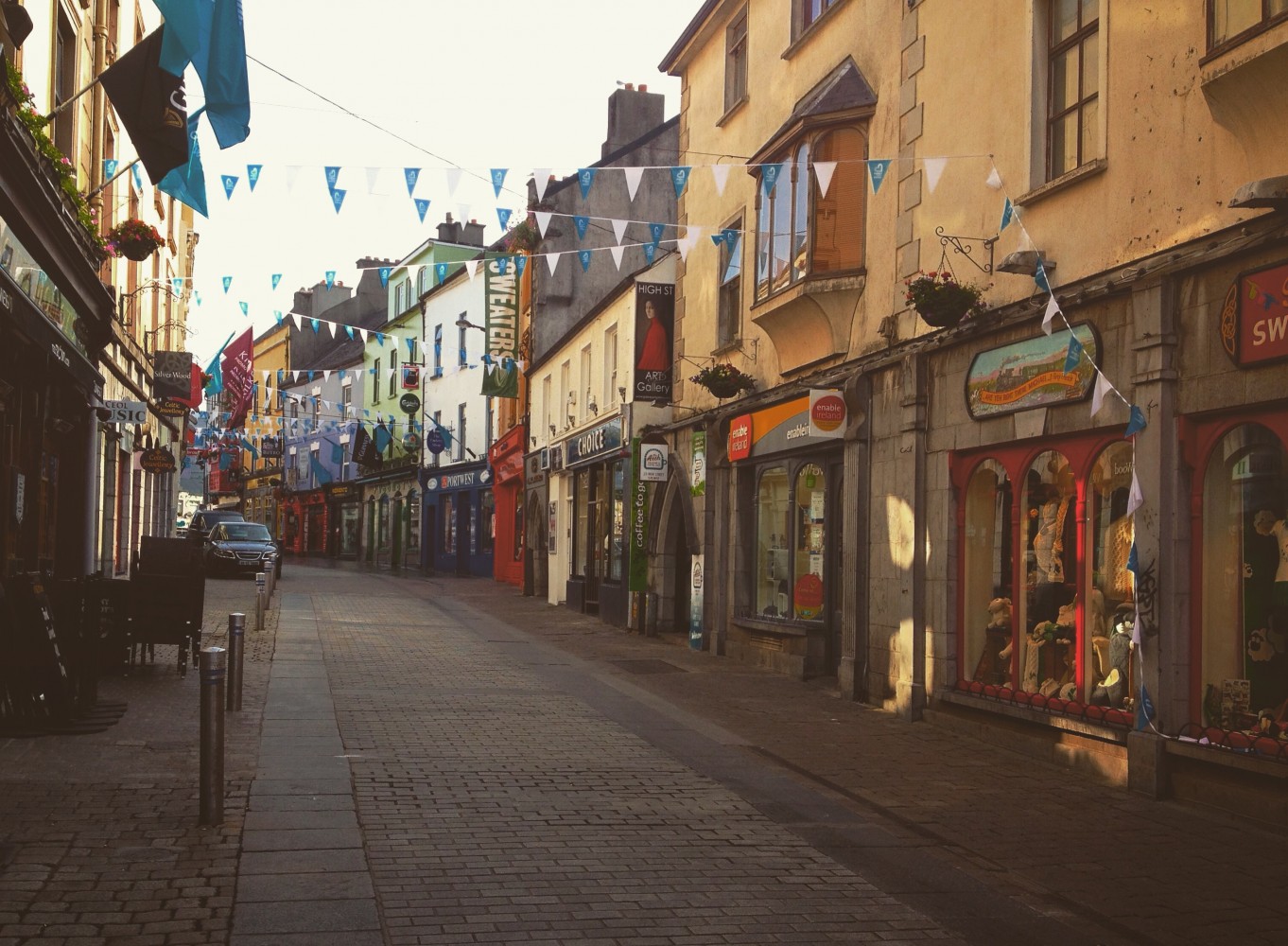
Nature, History and Culture Along the Wild Atlantic Way
My regular pilgrimages along the Wild Atlantic Way revealed beautiful scenes of Ireland that I could not have experienced any other way. A few of the highlights include a traditional thatch-roofed cottage in the seaport village of Kinvara, which is a car or bus trip of less than an hour from Galway City. The likes of this thatched cottage are fewer and fewer these days, so I can count myself among the lucky ones.
Kinvara is situated in an area called The Burren, a unique landscape of ancient limestone. Guided walks are offered for people of various abilities and inclinations. Wandering among the rocky paths and ancient ruins, looking out at a brilliant sea, I felt as though this was quintessential Ireland.

A few weekends later, though, I took the advice of some locals and headed west again to the unbelievably charming city of Westport. Westport spreads across the Carrowbeg River and features the kinds of quaint, colorful pubs and locally-owned shops of which tourists can’t get enough. Me included.
My favorite part of Westport, though, was the perfect beach scenes that revealed themselves just a short walk from the heart of the city. Having come from some of America’s most sprawling urban centers, I couldn’t believe I was standing amidst mountains, golden sand and sweeping seascapes - especially enjoyable on a sunny day in any season - even before finishing my coffee bought from a lovely shop in the city center.

I will admit, those ocean views really got me yearning for more of Ireland’s natural beauty. Luckily for me, the serene lakes of the Delphi Valley, also called the Doolough Valley, turned out to be the ideal place to quench my thirst for nature and quiet solitude.
The Doolough Valley also contains a small Famine Memorial, an essential stop for anyone interested in Irish history. This was the site of a particularly devastating incident during the Famine, which is commemorated with an annual walk 11-mile walk through the striking landscape.
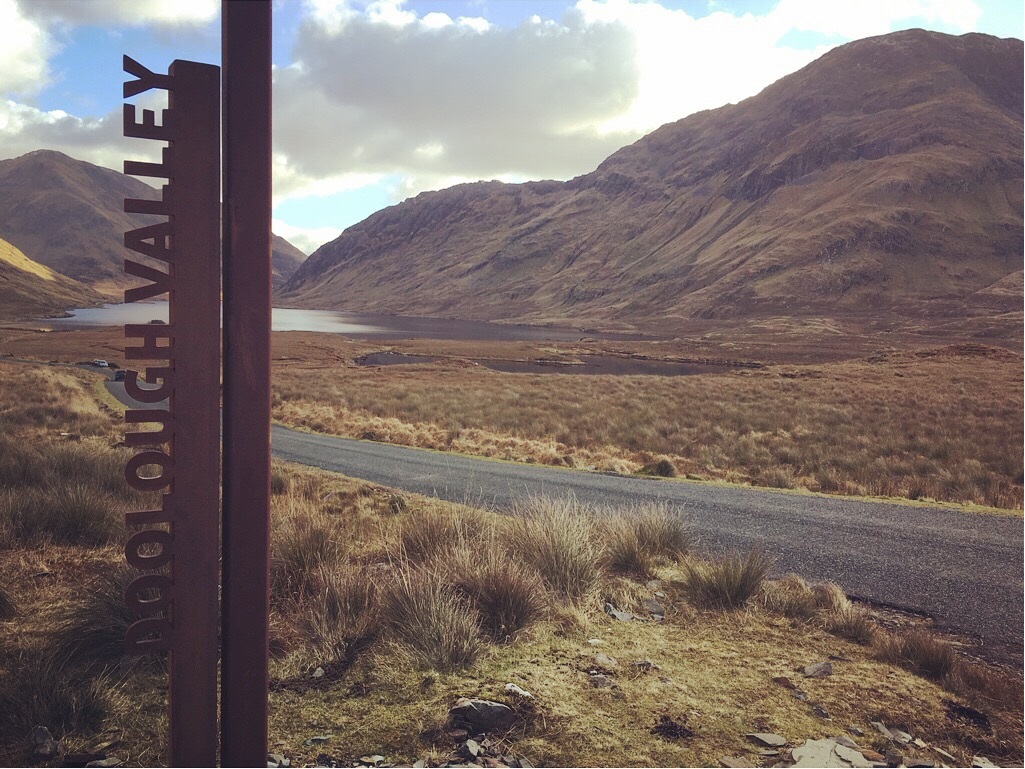
Next on the weekend agenda was the stunning Kylemore Abbey, a place I would have sworn only existed on postcards had I not seen it with my own eyes. It’s the largest tourist attraction in the west of Ireland, and there are plenty of tourist buses from Galway City that wind through the beautiful Connemara scenery to get there. Once onsite, I was able to take in the dazzling and still-functioning nunnery, the historic Gothic Church, and the lush Victorian walled gardens.
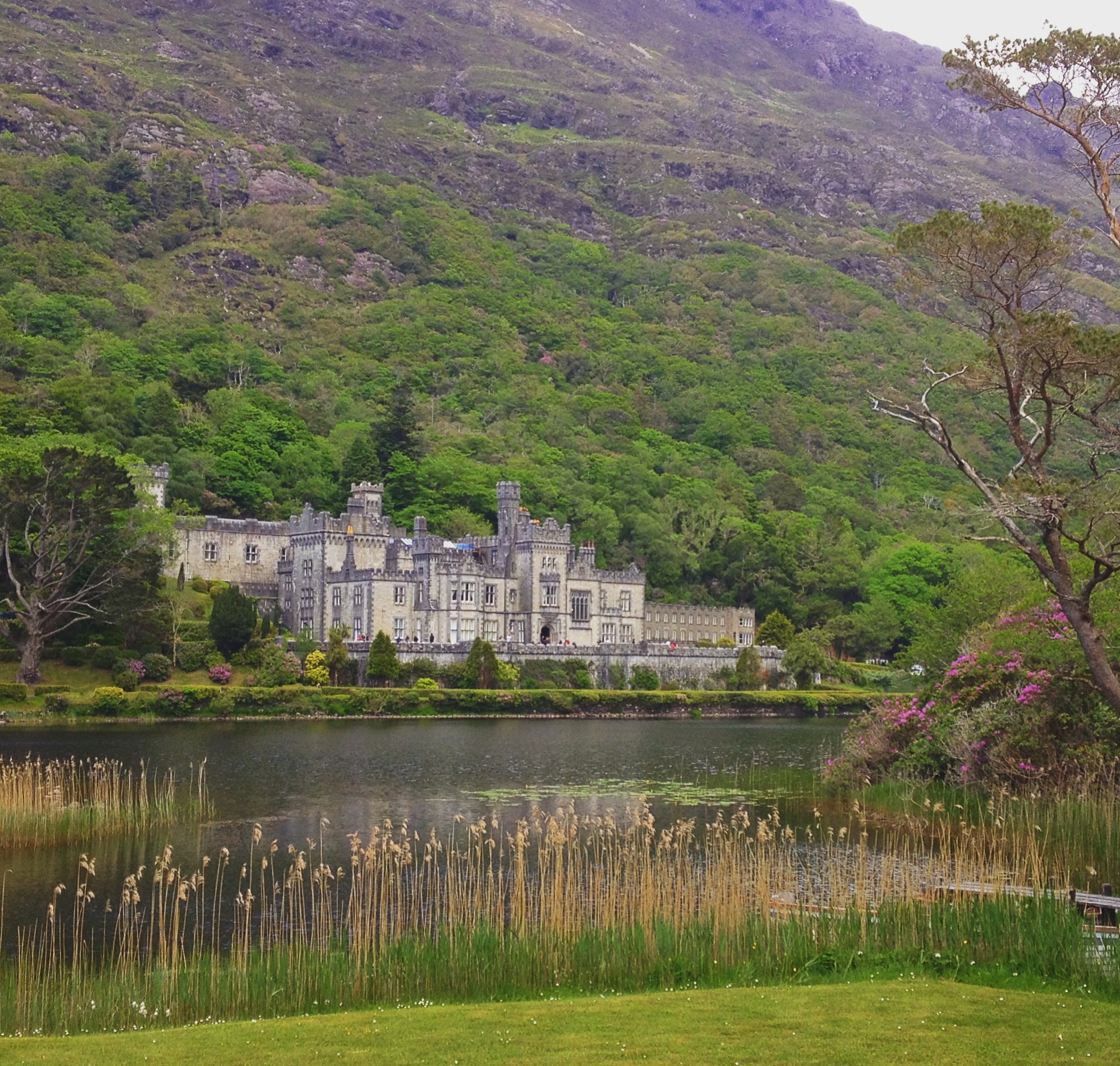
Before leaving this tranquil Irish paradise, I took a long stroll along the grounds, only managing to cover a bit of the site’s 1,000 acres but continually encountering dreamlike tableaus like this one very near the attraction’s cafe and artisan gift shop.
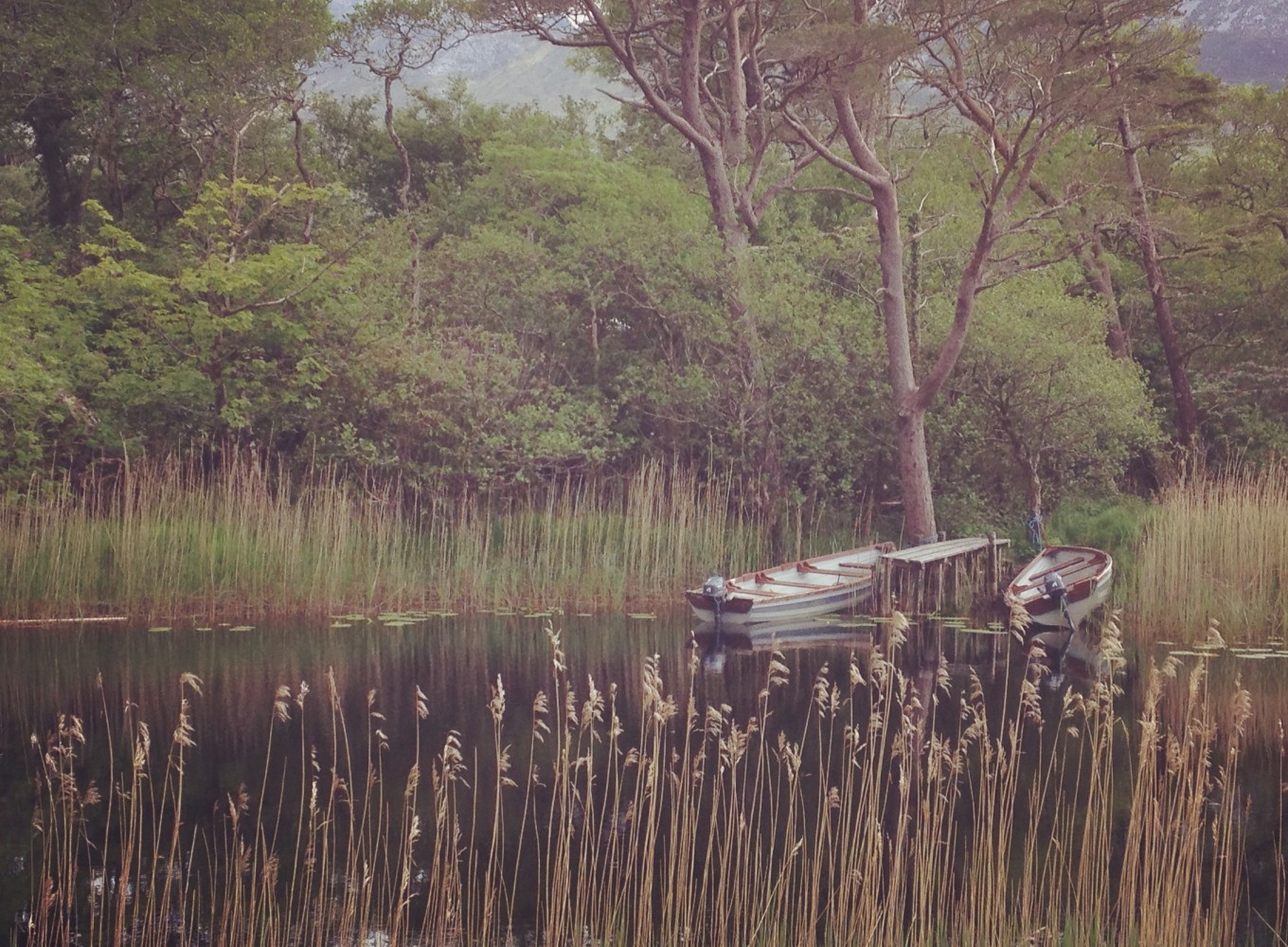
Thinking that I must have seen all of quintessential Ireland by now, I settled back into Galway for the next few weekends before the Wild Atlantic Way inevitably called to me again. This time I wanted to get a better idea of Irish history, so I hopped on a southwest-bound bus back into the beautiful Burren in County Clare. It turns out I was able to venture much farther into Irish history than I realized - to about the year 3,500 B.C. The Poulnabrone Dolmen, a massive tomb from the neolithic era, is still standing here.
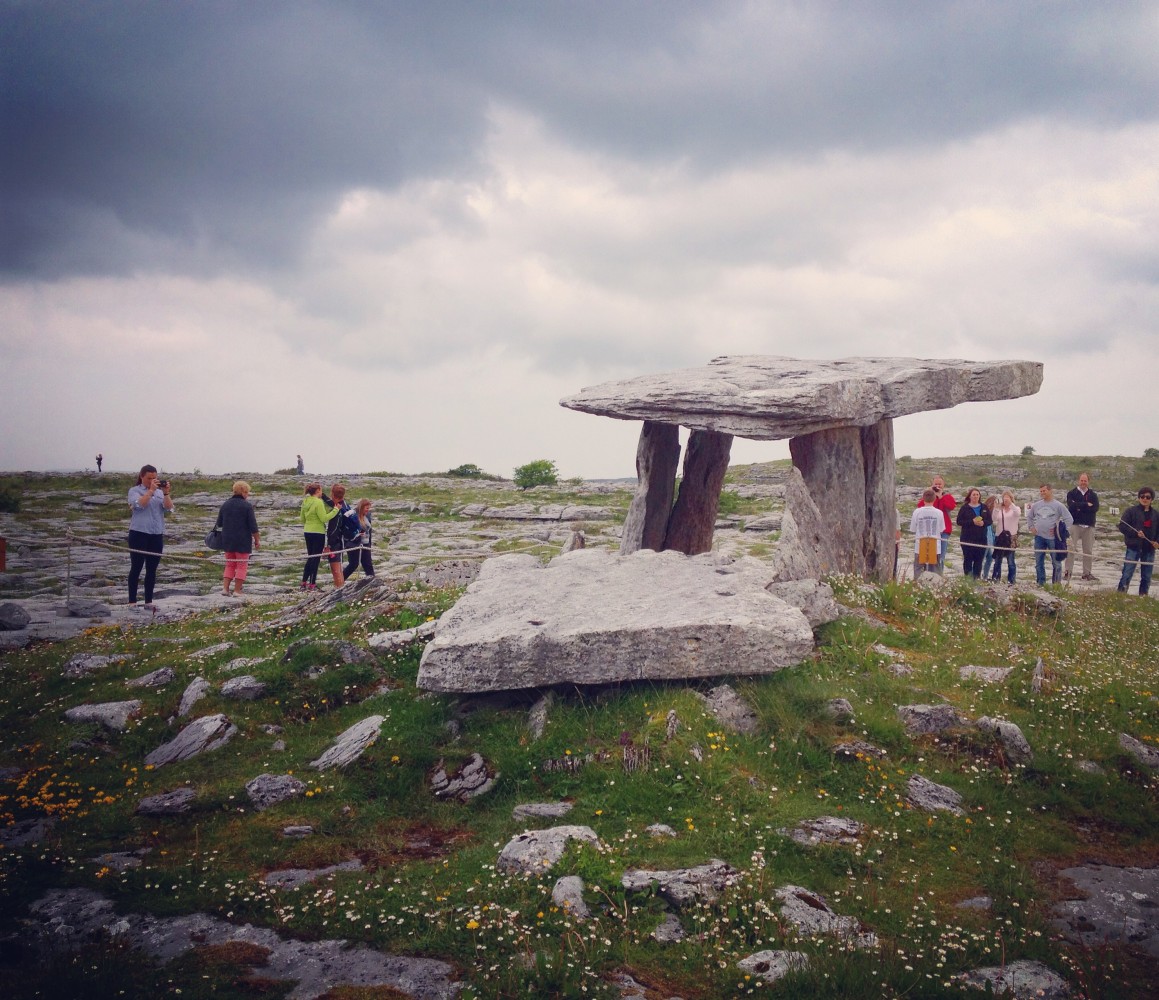
To my delight, on all of my trips along the Wild Atlantic Way, those famous colorful Irish sheep could be seen from the windows. Often lacking fences, farmers mark their sheep in bright colors to determine which ones belong to them. Adorable, don’t you think?

Galway International Arts Festival - An Extraordinary Way to End the Summer
After experiencing so much of what the Wild Atlantic Way has to offer, I was happy to settle back into Galway mid-July (now feeling a lot like home, to tell the truth) and watch that bright blue tent that heralds the beginning of the annual Galway International Arts Festival rising into the sky.
Now the iconic symbol of GIAF, the Festival Big Top tent hosts what is essentially a mini music festival within a festival, welcoming popular Irish bands (think Kodaline and The Coronas) as well as international acts (Chic featuring Nile Rodgers, Elvis Costello, The National and many more).
I would get to experience quite a few Festival Big Top shows in Galway before leaving, as well as a seemingly endless mix of other cultural events - theatre events, art galleries, street spectacles and comedy shows.
Remarkably, all of the 200 events of the festival, which was named in the Top 5 Summer Festivals in Europe by The Guardian newspaper, are within walking distance, taking place in the main in the heart of the city. A general buzz of excitement seemed to descend on the city mid-July, which locals tell me always happens around the two weeks of the festival.

All in all, my experience of Galway and Ireland’s Wild Atlantic Way far surpassed what I imagined back in the States. It turns out there’s a lot of truth in all those wistful stories from your Irish grandmother or faithful barman at the local Irish pub and a great many reasons why so many Americans dream of their own Irish adventures.
Unfortunately, though, no sign of the Lucky Charms mascot. Looks like I’ve still got some exploring to do!
By Carly Zimmerman

